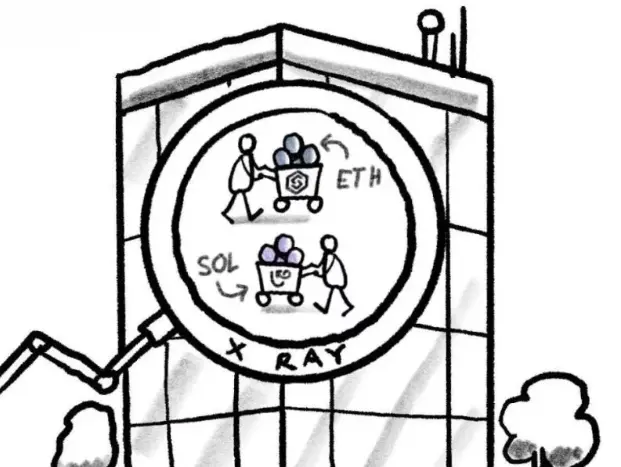Options data show traders hedging for Bitcoin drop below $100K and Ethereum below $3K, Derive says
Quick Take Derive data show crypto traders have shifted toward bearish positioning for Bitcoin and Ethereum options expiring in August, with demand focused on put options. Bearish positioning followed the July Fed meeting, which maintained current interest rates.

Tepid cryptocurrency prices following last month’s sizzling rally for Bitcoin, Ether, and crypto majors seem to have incentivized bearish positioning from some market participants.
Crypto options platform Derive.xyz said that positioning for its Aug. 29 expiry has tilted decisively toward puts on BTC and ETH, signaling traders are hedging for price declines into month-end.
A call gives the buyer the right, but not the obligation, to buy an asset at a set strike price on or before expiration. Puts give the right to sell at the strike. When traders load up on puts, it usually indicates demand for downside protection. This negative skew also means puts are pricier relative to calls, reflecting a stronger bid for insurance against a potential drop.
Bearish tilt
In a market update shared with The Block on Wednesday, Derive’s Head of Research Dr. Sean Dawson said Ether puts now exceed calls by just over 10% for the Aug. 29 maturity, with the heaviest interest clustered at $3,200, $3,000, and $2,200 strikes. The analyst described the setup as consistent with expectations for “anything from a moderate pullback to a deeper correction.” Ether floated around $3,624 on Aug. 6, down over 4% in the last week, as The Block’s price page shows.
The bearish tilt is more pronounced in Bitcoin, according to Dawson. Put open interest is nearly five times calls for Aug. 29, with about half concentrated at the $95,000 strike and another quarter around $80,000 and $100,000. The distribution suggests traders are “heavily betting on a painful move back below $100,000,” the analysts noted.
According to The Block’s price page , BTC has dropped more than 3% in the past seven days and changed hands for about $114,075 today.
Skew, a gauge of relative demand for puts versus calls, has moved lower as hedging demand picked up. Derive cited 30-day BTC skew falling to about -2% from +2% over the past month, and ETH 30-day skew to about -2% from +6% in the same period.
The derivatives platform added that monthly implied volatility sits near 35% for BTC and 65% for ETH, with the volatility gap widening from roughly 24 percentage points in early June to nearly 30 points, implying a bumpier path for ETH through August despite boasting a less bearish put-to-call ratio.
Despite downside hedging, Derive’s price probability estimates show a mixed sentiment. There’s about a 25% chance ETH dips below $3,000 before the end of August, but 30% odds ETH finishes above $4,000, up from 15% last week. For Bitcoin, Dawson sees an 18% chance of retesting $100,000 before month-end.
What traders are watching
Cautious positioning on Derive emerged after July’s Federal Reserve meeting on interest rates. As widely expected, the Fed maintained its current funding rate, citing inflation concerns and economic uncertainty.
Yet, the meeting was not without surprises. Two Fed governors, Christopher Waller and Michelle Bowman, voted for rate cuts. It was the first time in 30 years that two fed officials dissented from the status quo.
The deviation from previous unanimous Fed decisions has apparently bolstered hopes for reduced funding rates. Traders are now anticipating a Fed pivot at the September Federal Open Market Committee session. The CME FedWatch tool shows an 85.5% chance of eased interest rates at next month’s meeting.
Disclaimer: The content of this article solely reflects the author's opinion and does not represent the platform in any capacity. This article is not intended to serve as a reference for making investment decisions.
You may also like
Market value evaporates by 60 billions! Faith shaken, institutions on the sidelines—has bitcoin’s “post-halving crash” curse come true?
A major reason for the recent plunge is market concerns over a repeat of the "halving cycle"—that is, after a supply reduction triggers a boom, a deep correction inevitably follows. Panic selling by investors, combined with a stagnation of institutional funds and macroeconomic headwinds, have collectively led to a collapse in market confidence.

SharpLink and Upexi: Each Has Its Own Strengths and Weaknesses in DAT
For this model to be sustainable, one of the following two scenarios must occur: either staking truly becomes a corporate cash engine, continuously providing funds for digital asset purchases; or companies must incorporate the planned sale of digital assets into their digital asset strategies to achieve systematic profits.

80% is hype? Six major red lines reveal the true intentions of Stable
It appears to be an infrastructure upgrade, but in essence, it is an early, insider-friendly issuance.

Global assets are falling simultaneously—why have safe havens collectively failed?

